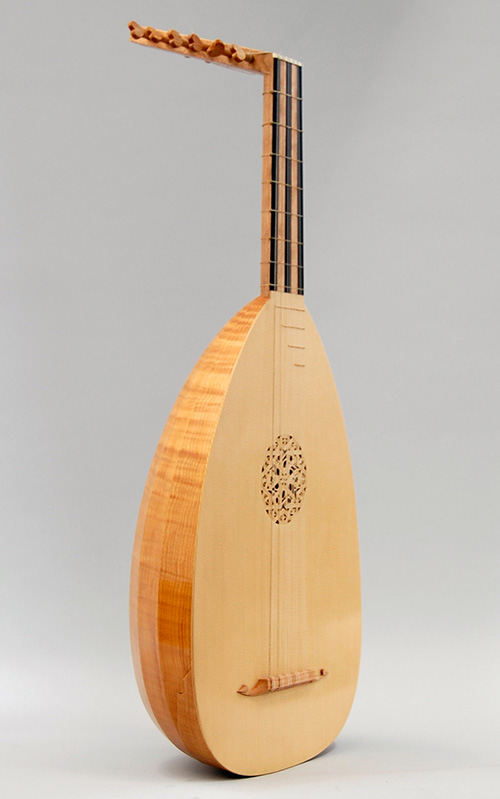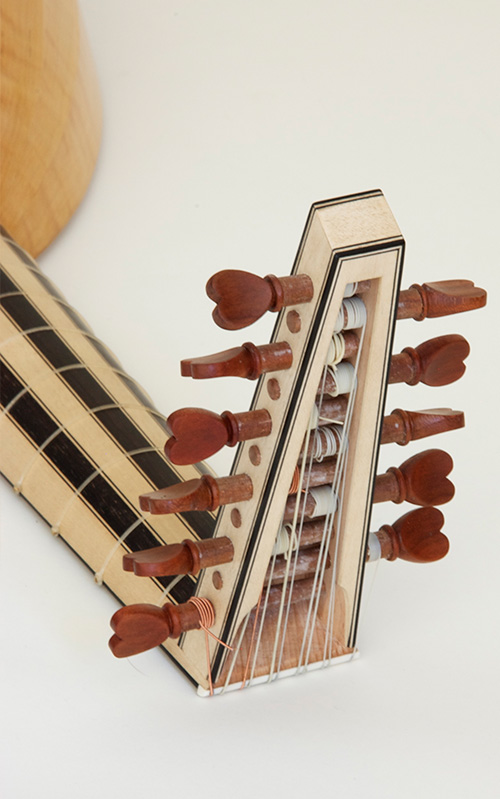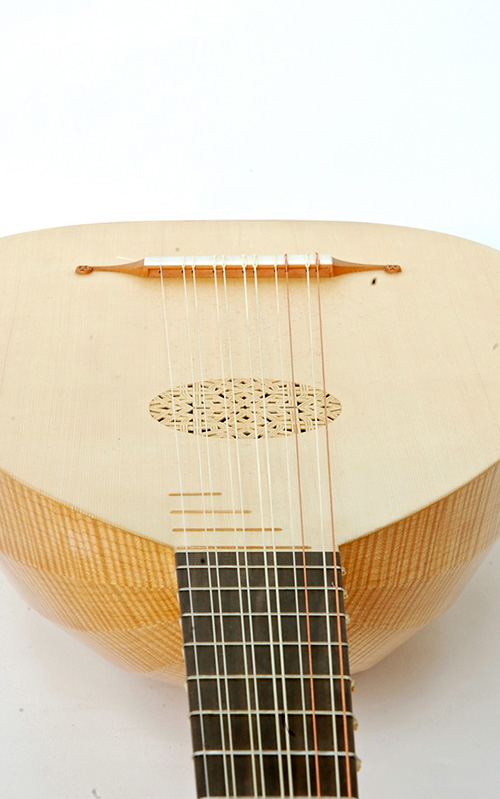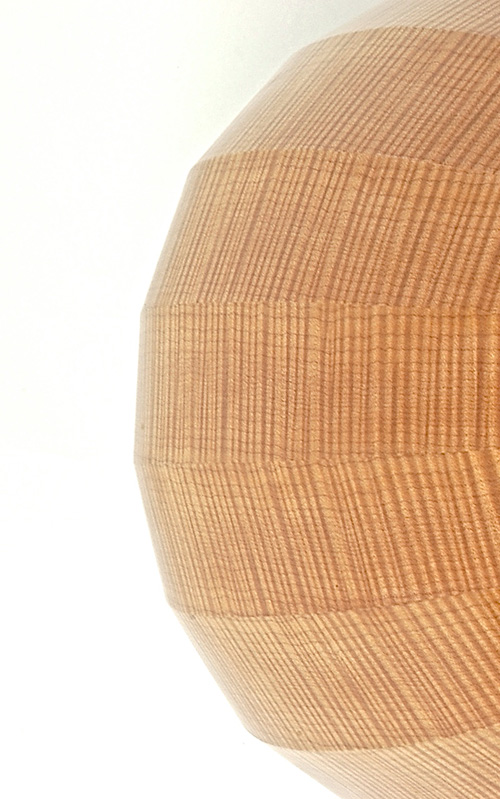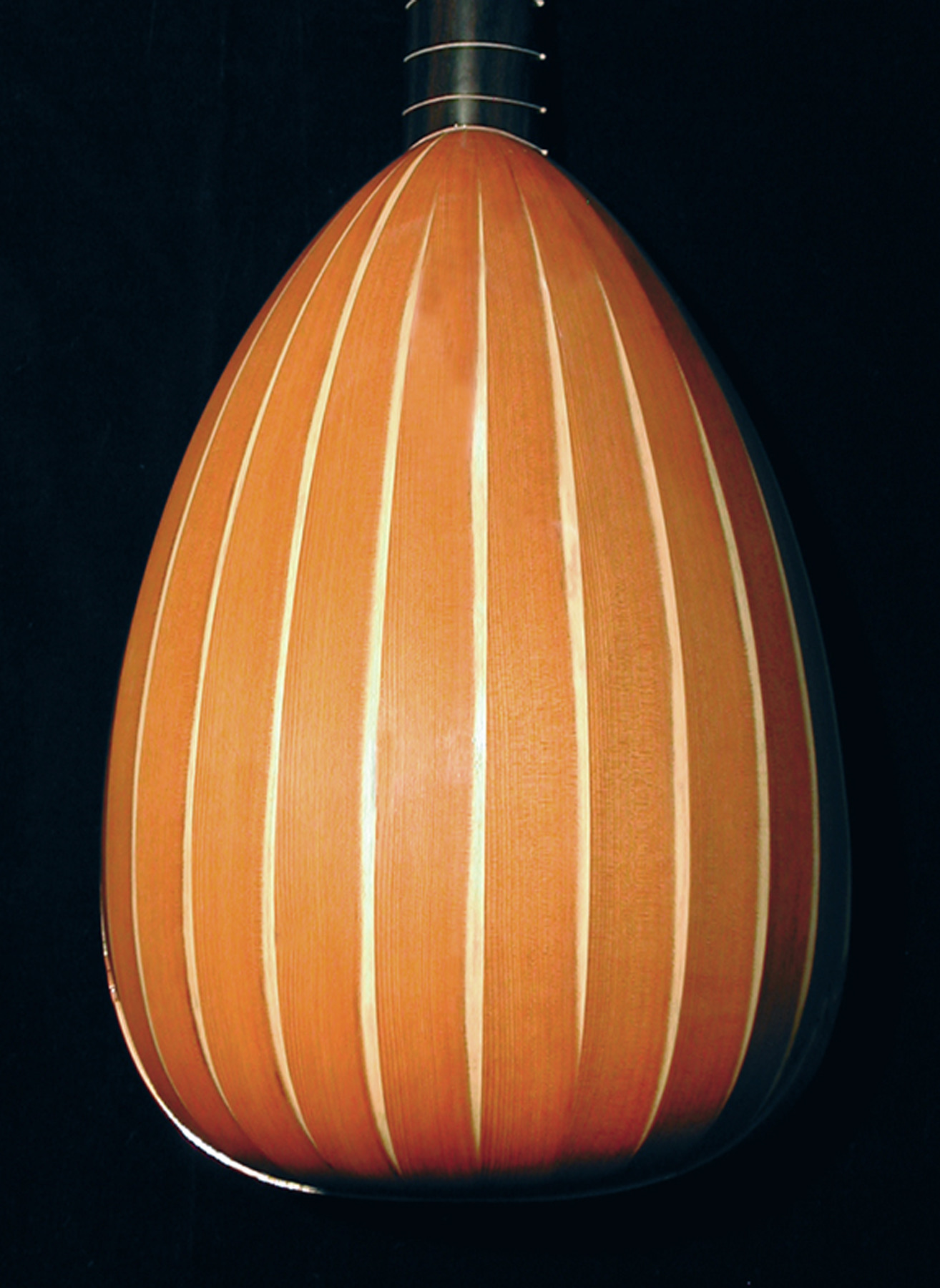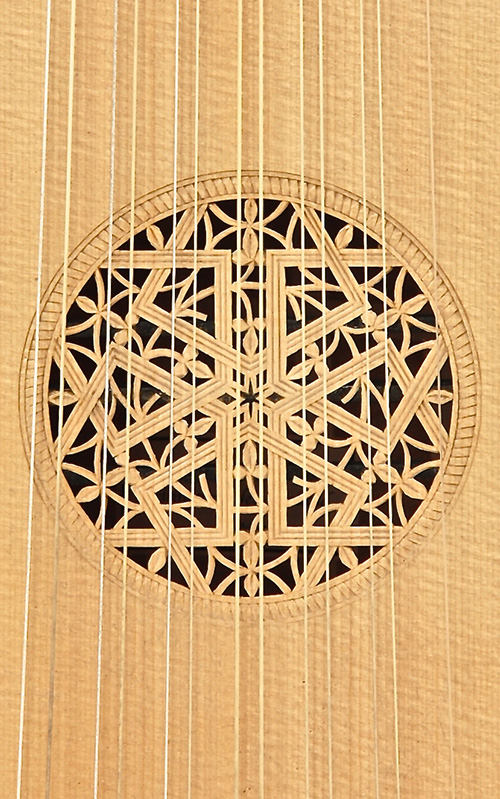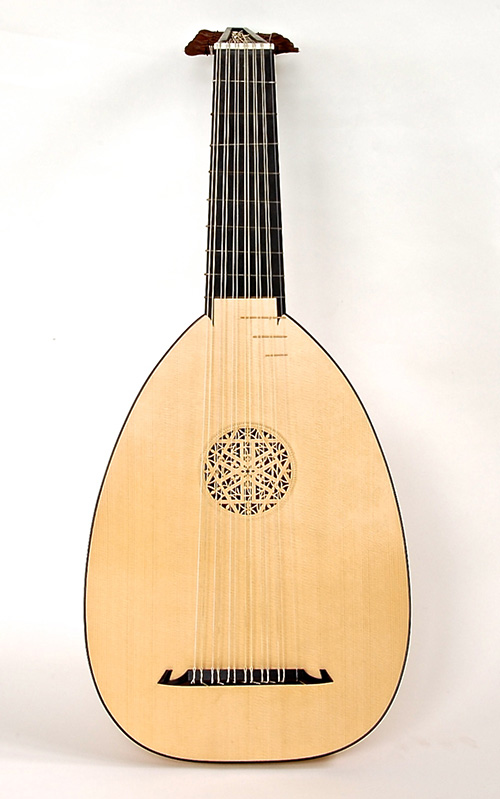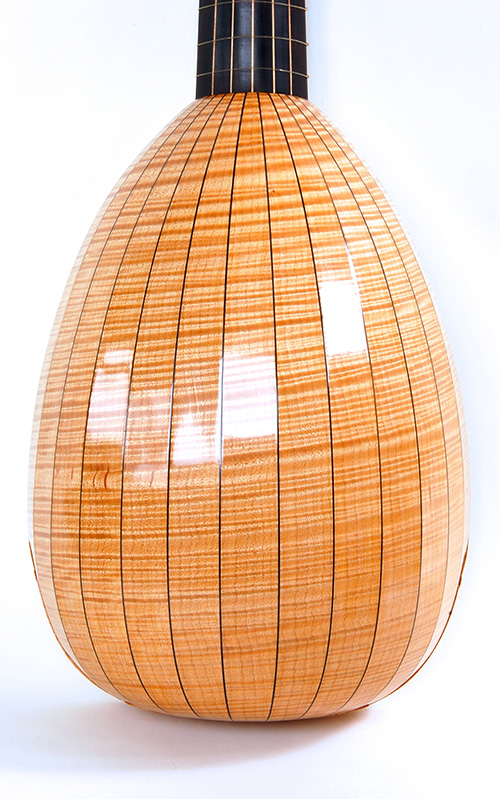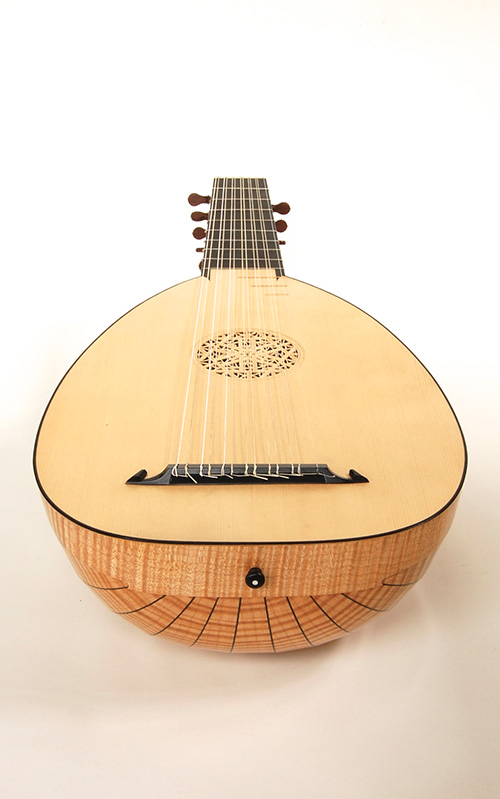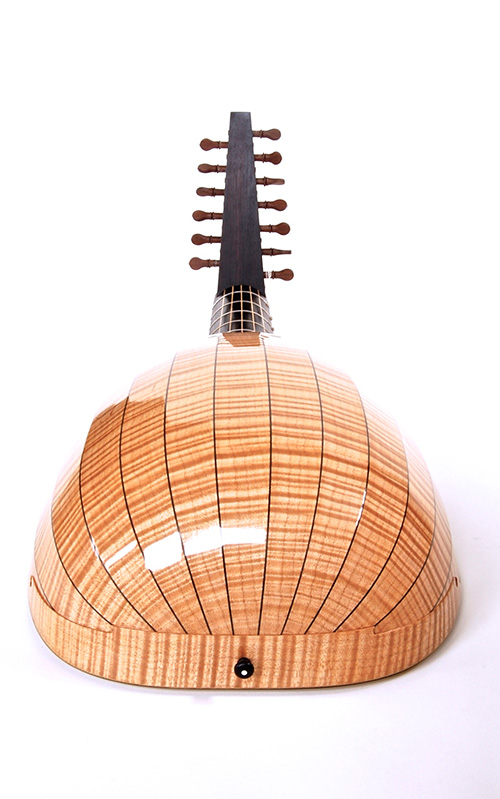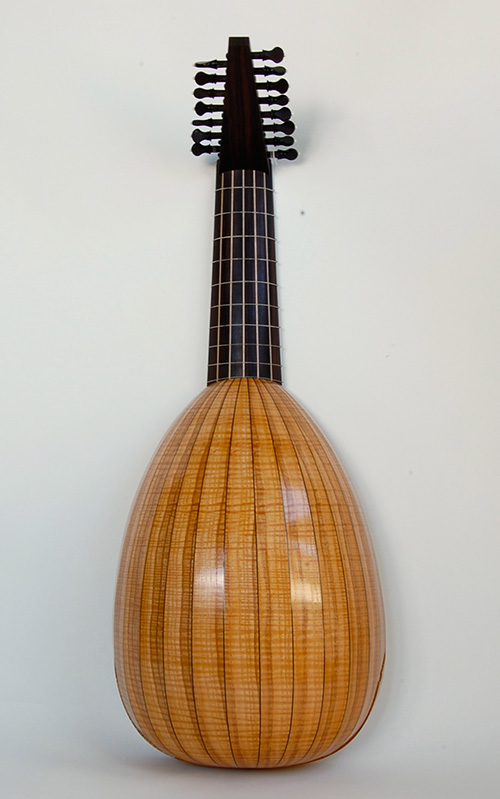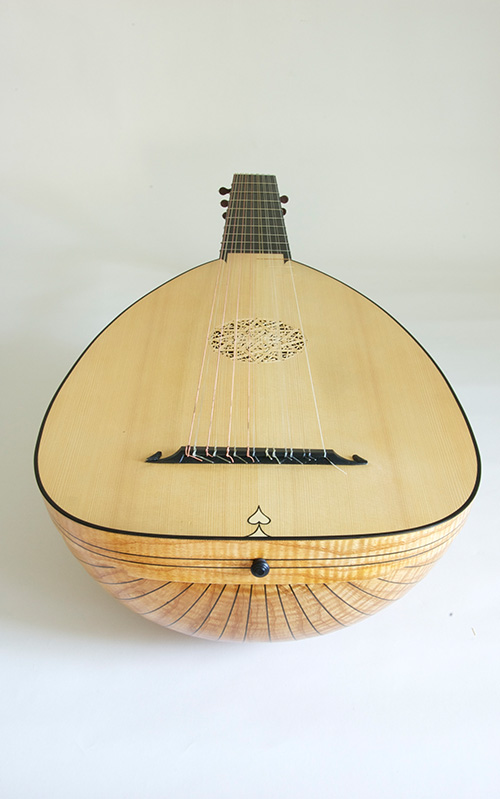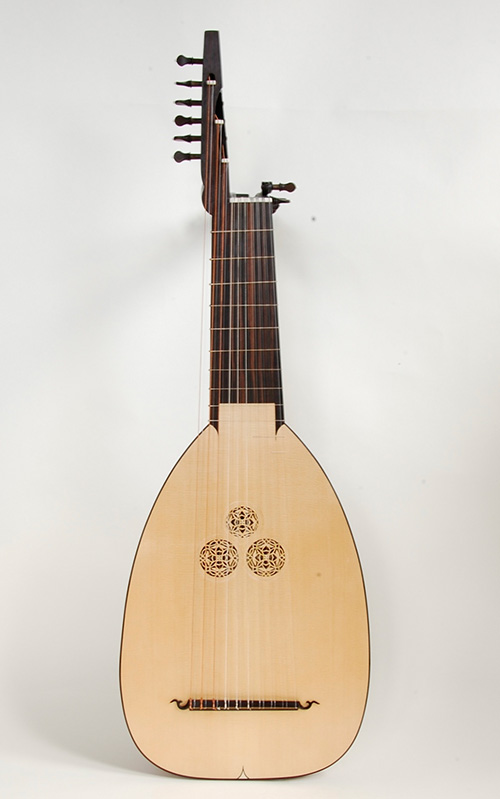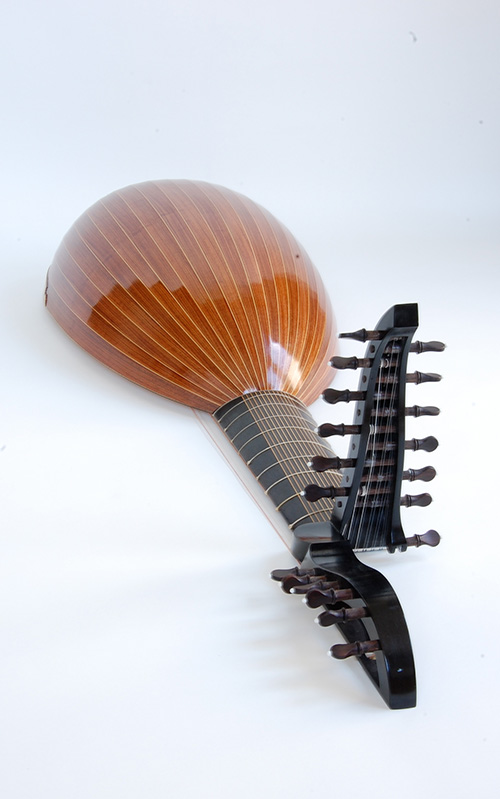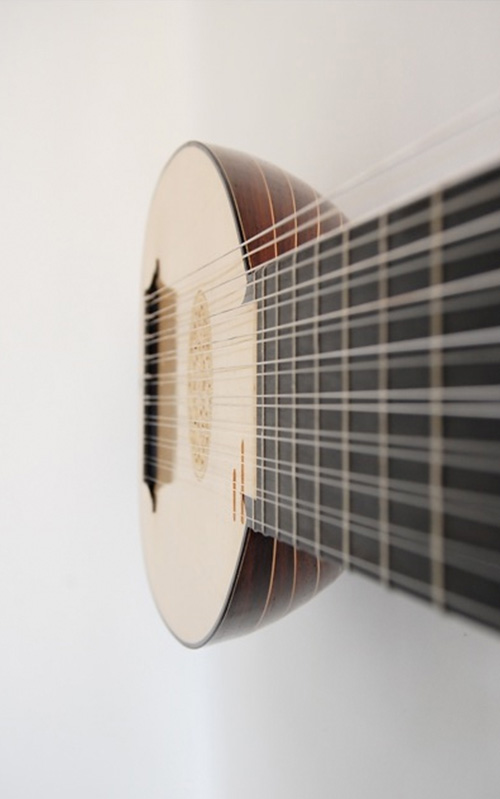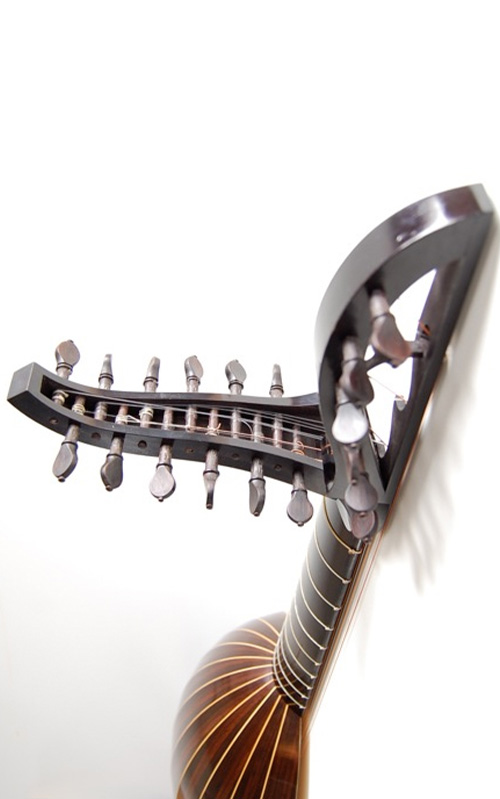Renaissance Lutes
6-Course Renaissance Lute
Six-course lutes emerged towards the end of the 15th century and they become a standard instrument for nearly a century. These lutes are ideal for exploring a vast assortment Italian, German, and Spanish music of the 16th century. Early six-course lutes often exhibit a slender body profile known as the pearl form and they were mostly built using either nine or eleven broad ribs. I build a variety of 6-course models after makers such as Hans Frei, Magno Tieffenpruchar, and my own designs.
7-Course Renaissance Lute
Towards the middle of the 16th century players and composers began to experiment with an additional bass course that could be tuned in either F or D adding a greater musical range. At the same time Venetian builders expanded the narrower Bolognese body forms and increased the number of ribs used to construct the bowl. A seven course lute is a good choice for those who want a slightly more versatile renaissance instrument but want to retain the essential simplicity of the early renaissance lute. Hieber, Frei and Tieffenpruchar forms are available depending on desired pitch and string length.
8-Course Renaissance Lute
The 8-course lute has become a standard for modern Renaissance lutenists despite not being especially prevalent during the 16th or 17th centuries. The now ubiquitous 8-course lute adds F and D bass notes increasing the compass and versatility of the instrument for, although the earlier 6-course repertoire becomes less satisfying. The 8-course has become a favored instrument for the generalist who wants to explore a broad range of Renaissance solo lute music and some basic accompaniment. Hieber, Frei and Tieffenpruchar forms are available depending on desired pitch and string length.
10-Course Renaissance Lute
As the final form in the evolution of the of the renaissance lute, the 10-course lute has enormous potential for both solo and ensemble music. 10-course lutes came in many forms including several with extended necks and stepped nuts systems that addressed the acoustic difficulties of shorter bass strings. A good choice for its versatility but not ideal for someone wanting to concentrate on early renaissance music. I have built several 10-course lutes with the so-called “double-dutch” neck extensions often seen in Flemish painting of the 17th century.
